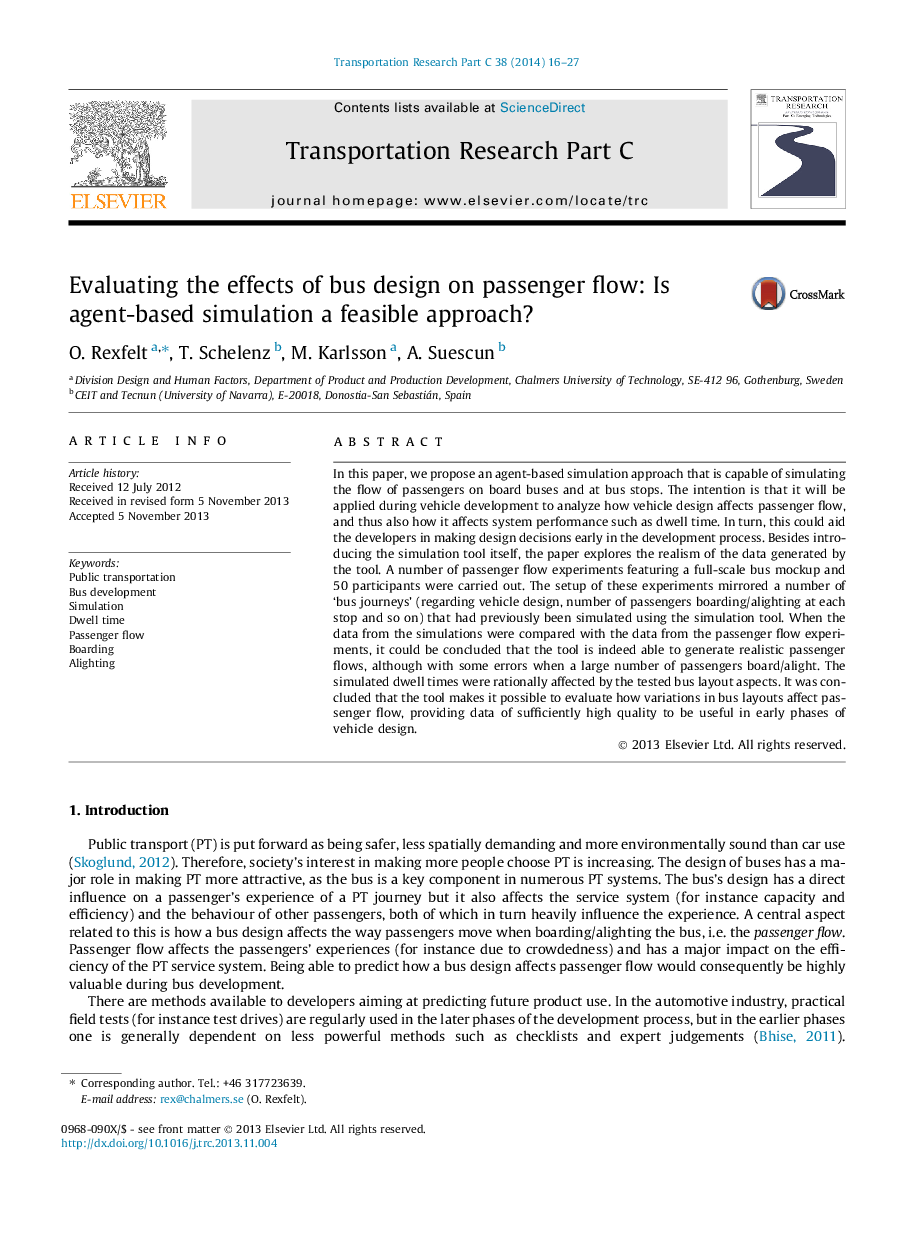| Article ID | Journal | Published Year | Pages | File Type |
|---|---|---|---|---|
| 6937169 | Transportation Research Part C: Emerging Technologies | 2014 | 12 Pages |
Abstract
In this paper, we propose an agent-based simulation approach that is capable of simulating the flow of passengers on board buses and at bus stops. The intention is that it will be applied during vehicle development to analyze how vehicle design affects passenger flow, and thus also how it affects system performance such as dwell time. In turn, this could aid the developers in making design decisions early in the development process. Besides introducing the simulation tool itself, the paper explores the realism of the data generated by the tool. A number of passenger flow experiments featuring a full-scale bus mockup and 50 participants were carried out. The setup of these experiments mirrored a number of 'bus journeys' (regarding vehicle design, number of passengers boarding/alighting at each stop and so on) that had previously been simulated using the simulation tool. When the data from the simulations were compared with the data from the passenger flow experiments, it could be concluded that the tool is indeed able to generate realistic passenger flows, although with some errors when a large number of passengers board/alight. The simulated dwell times were rationally affected by the tested bus layout aspects. It was concluded that the tool makes it possible to evaluate how variations in bus layouts affect passenger flow, providing data of sufficiently high quality to be useful in early phases of vehicle design.
Related Topics
Physical Sciences and Engineering
Computer Science
Computer Science Applications
Authors
O. Rexfelt, T. Schelenz, M. Karlsson, A. Suescun,
